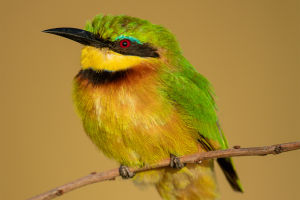Marvels Of Hummingbirds
Hummingbirds, small and exquisite birds with vibrant colors, are one of nature's wonders.
This article will take you through the habits, flying abilities, ecological roles, and cultural symbolism of hummingbirds.
Hummingbirds belong to the family Trochilidae and are the smallest birds in the world. Typically, they measure only 2 to 5 inches (approximately 5 to 13 centimeters) in length and weigh less than 2 grams.
Despite their tiny size, they are remarkably adaptive and skilled in survival. Their feathers display brilliant iridescence, caused by the unique microstructure on their surface that reflects light, giving them a dazzling range of colors such as green, blue, purple, and gold. These hues make them sparkle in the sunlight.
One of the most astonishing characteristics of hummingbirds is their flying abilities. Unlike other birds, hummingbirds can rotate their wings up and down on either side of their body, allowing them to hover. Their wings beat about 50 to 80 times per second, enabling high-speed and precise flight control. Hummingbirds can fly at speeds of up to 50 miles per hour (approximately 80 kilometers per hour), and they can even fly backward, demonstrating remarkable agility.
While hovering, they maintain balance by moving their wings up and down, rather than back and forth, which allows them to stay in place while feeding on nectar without leaving the flower.
Hummingbirds' feeding habits are equally fascinating. They primarily feed on nectar but will also consume small insects and spiders to obtain necessary proteins. Their long, flexible tongues can extend rapidly and roll up nectar, and the structure of their tongues enables them to feed at a speed of up to 13 times per second.
Hummingbirds need to consume vast amounts of energy every day to support their high metabolic rate, and thus, they are constantly in search of food. Their daily intake can exceed twice their body weight, replenishing the energy required for their rapid flight.
In ecosystems, hummingbirds play a crucial role. First and foremost, they are pollinators for many plants. While feeding on nectar, they carry pollen from flower to flower, helping plants with reproduction.
Hummingbirds are particularly attracted to bright-colored flowers, especially red and orange ones, as these colors often draw them in. In doing so, they facilitate gene exchange between plants and contribute to maintaining plant biodiversity. Furthermore, hummingbirds’ behavior has a profound impact on forest ecosystems by helping maintain plant distribution and flourishing populations.
The lifespan of a hummingbird is relatively short, usually around 3 to 5 years. However, in the wild, they face significant survival pressures. Predators such as snakes, other birds, and raptors often pose threats to their lives.
Additionally, habitat loss and climate change have impacted their survival. As global climate changes, some hummingbird species are experiencing shifts in their distribution, and warmer climates may result in a reduction of their habitats or changes in migration paths. This puts their ecological status in jeopardy, making it crucial to protect hummingbirds and their habitats.
In conclusion, hummingbirds are captivating creatures in the natural world. Going forward, we must pay greater attention to their survival status and work to create more suitable living environments for them.


